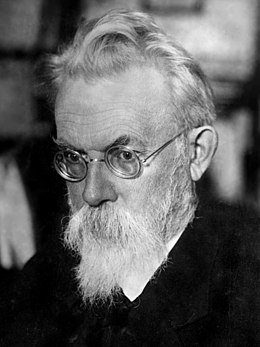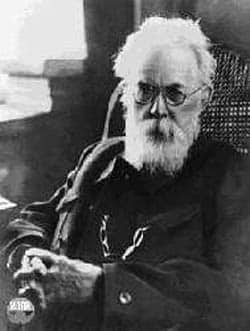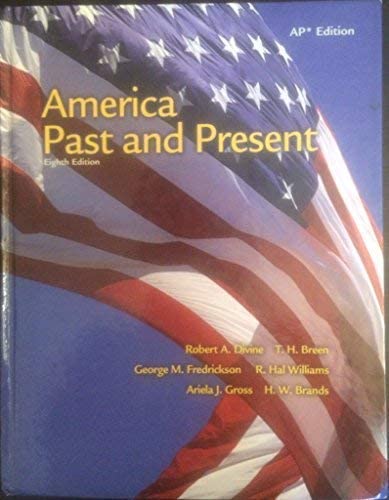Biogeochemical Cycles by Vladimir Vernadsky
The term “biogeochemical cycle” was first coined by the Russian scientist Vladimir Vernadsky in 1926. He defined it as “the totality of all exchanges of matter and energy between the biosphere and its environment”.
Vernadsky was one of the first to recognize that living organisms play a crucial role in shaping Earth’s geology and chemistry.
He argued that life itself is a geological force, capable of altering the planet on a global scale.
Today, biogeochemical cycles are an important part of Earth systems science, which studies how different parts of the planet interact with each other. The four main elements involved in biogeochemical cycles are carbon, nitrogen, phosphorus and water.
The Russian scientist Vladimir Vernadsky is considered to be the father of biogeochemistry, which is the study of the chemical composition of the Earth and its changes over time. In his groundbreaking work, The Biosphere, he put forth the idea that all life on Earth is connected and interacts with the physical environment to create a self-regulating system.
He proposed that there are three major biogeochemical cycles: the carbon cycle, the nitrogen cycle, and the phosphorus cycle.
These cycles are powered by solar energy and involve both living organisms and geological processes.
The carbon cycle is perhaps the most important of these cycles, as it regulates atmospheric CO2 levels and climate. Through photosynthesis, plants take in carbon dioxide from the air and convert it into organic matter.
This organic matter then either decays or is consumed by animals, releasing carbon dioxide back into the atmosphere. The fossil fuels we burn for energy also add large amounts of carbon dioxide to the atmosphere.
The nitrogen cycle is responsible for making sure there is enough nitrogen available for plants to grow.
Nitrogen-fixing bacteria convert atmospheric nitrogen into a form that plants can use, such as ammonia or nitrates. Once taken up by plants, this nitrogen becomes part of their tissues. When animals eat plants or other animals, they inherit some of this nitrogen.
Eventually, all organisms return nitrogen to the atmosphere when they die and decompose or when they release waste products like urine and feces. Burning fossil fuels also adds large amounts of nitrogen oxides to the atmosphere.
The phosphorus cycle is essential for plant growth as phosphorus is a key component of DNA and cell membranes.
It enters ecosystems through weathering of rocks and soil erosion . Plants absorb phosphate ions from soil water , which become part of their tissue . Animals consume plants , incorporating phosphate into their own tissue .
When organisms die , decomposing bacteria remineralize phosphate , making it available for uptake by plants once again .
Science and Beers Podcast: The Biosphere
Vernadsky Biosphere Pdf
The Vernadsky Biosphere Reserve is a nature reserve in the Ukrainian steppe, one of the largest in Europe. It was created in 1927 to protect the steppe ecosystem and its unique flora and fauna. The reserve covers an area of 6,700 square kilometers (2,500 square miles) and includes several protected areas: the Black Sea Biosphere Reserve, Kherson Regional Landscape Park, Dnipro National Nature Park, and Askania-Nova Biosphere Reserve.
The climate of the reserve is continental with warm summers and cold winters. The average annual temperature is +11 °C (52 °F), but can reach +40 °C (104 °F) in summer and -20 °C (-4 °F) in winter. The territory receives about 350–400 mm (14–16 inches) of precipitation per year.
The soils of the reserve are diverse: sandy near the sea coasts, loamy and clayey in river valleys, saline in some depressions. There are more than 3,600 species of plants on the territory, including rare ones such as Crimean lilies, tulips from Asia Minor and Greece, Cossack asparagus. More than 320 bird species live here; among them are flamingos, pelicans, herons, eagles, hawks, bustards; 44 mammal species have been recorded including Przewalski’s horses introduced in 1988.
reptiles (lizards and snakes), amphibians (newts), fresh-water fish inhabit ponds and lakes.

Credit: en.wikipedia.org
What Did Vladimir Vernadsky Discover?
Vladimir Vernadsky was a Russian-Ukrainian scientist who is best known for his work in the fields of geochemistry and radioactivity. He is also considered to be one of the founders of the science of biogeochemistry.
Vernadsky was born in Saint Petersburg, Russia in 1863.
He studied mineralogy and crystallography at the University of Saint Petersburg before moving to Germany to continue his studies at the University of Freiberg. It was while he was in Freiberg that Vernadsky developed an interest in radioactivity after hearing a lecture by Anton von Friedland on the topic.
After returning to Russia, Vernadsky began working at the St Petersburg Mining Institute where he eventually became head of the Mineralogy Department.
In 1898, he published his first paper on radioactivity which brought him international recognition.
In 1900, Vernadsky married Natalia Pokrovskaya, with whom he would have three children. The following year, he accepted a position as professor of mineralogy and geochemistry at Moscow University where he would work for the rest of his career.
It was during his time at Moscow University that Vernadsky made his most important scientific contributions. In 1911, he proposed the existence of what he called “radioactive matter” which later came to be known as radon gas. This discovery helped pave the way for our understanding of nuclear radiation and its effects on humans and the environment.
In 1923, Vernadsky coined the term “biosphere” to describe all life on Earth and its interactions with our planet’s minerals and rocks. This concept is now considered one of the cornerstones of modern environmental science.
Who Discovered Biogeochemical Cycle?
The biogeochemical cycle was first proposed by Russian scientist Vladimir Vernadsky in the 1920s. Vernadsky’s work was based on the earlier work of chemist Alexander von Humboldt, who had observed that certain elements seemed to be cycled between the atmosphere, land, and oceans. Von Humboldt had also noted that some elements, such as iron, were more likely to be found in certain locations than others.
Vernadsky formalized these observations into what he called the biosphere-geochemical cycle. This model proposed that there are four main reservoirs of matter on Earth: the atmosphere, lithosphere (rocks and minerals), hydrosphere (water), and biosphere (living things). These reservoirs are interconnected, with matter moving between them through various processes.
The most important of these processes is photosynthesis, which occurs in plants and other photosynthetic organisms. During photosynthesis, carbon dioxide from the air is converted into organic matter, which then enters the food chain. As organisms eat and respire, they return carbon dioxide back to the atmosphere.
This exchange of carbon between the atmosphere and living things is known as the carbon cycle.
Other important biogeochemical cycles include the nitrogen cycle and the phosphorus cycle. Like carbon, nitrogen is essential for life but it exists in relatively small amounts in nature.
Nitrogen-fixing bacteria convert atmospheric nitrogen into a form that can be used by plants, and animals get their nitrogen from eating plants or other animals. Phosphorus is another essential element for life, but it is mostly found in rocks and minerals rather than in living things.
What Did Vladimir Vernadsky Hypothesize About the Term Biosphere?
In 1926, Vladimir Vernadsky published a groundbreaking work entitled The Biosphere, in which he put forth the first scientific hypothesis regarding the existence of a global ecosystem. In it, he proposed that there is a thin layer of life surrounding Earth’s surface, which he called the biosphere. This zone is where all living things reside, and it interacts with the lithosphere (Earth’s crust), hydrosphere (water), and atmosphere (air) to create a unique and dynamic environment that supports life.
Vernadsky’s work was significantly ahead of its time, as it wasn’t until the 1960s that scientists began to seriously study and understand Earth’s ecosystems. Today, we know that the biosphere is indeed real and extends from the very bottom of the ocean to the highest mountains. It contains an incredible diversity of life forms, from bacteria to whales, and plays a vital role in regulating our planet’s climate and overall health.
Which Term was Popularized by Vladimir Vernadsky?
The term “noosphere” was popularized by Vladimir Vernadsky, a Russian-born scientist who emigrated to France in the early 20th century. The word is derived from the Greek noun νοῦς (nous), meaning “mind” or “intellect”, and σφαῖρα (sphaira), meaning “sphere”. It literally means “sphere of mind” or “mental sphere”.
Vernadsky defined the noosphere as “the sum total of the intellectual activity of mankind”. He saw it as being analogous to the biosphere, but with one key difference: whereas the biosphere is determined by natural laws, the noosphere is shaped by human thought and action. In other words, while the biosphere is a product of nature, the noosphere is a product of human culture.
The noosphere has been further elaborated upon by Pierre Teilhard de Chardin, an influential French philosopher and Jesuit priest. In his view, the noosphere is not just a sphere of human activity, but also a stage in humanity’s evolutionary development. This evolution is driven by what he calls the Omega Point—a force that pulls all things towards greater complexity and unity.
For Teilhard, the Omega Point represents both our highest potential and our greatest challenge: it is what we strive for even as we risk destroying ourselves in the process.
Conclusion
The Russian scientist Vladimir Vernadsky is considered to be the founder of biogeochemistry, which is the study of the chemical composition of living things and their interactions with the environment. In his seminal work, The Biosphere, Vernadsky put forth the idea that there is a global cycle of matter and energy that flows through all living things. This “biogeochemical cycle” starts with the sun, which provides energy for plants to grow.
Plants then convert this solar energy into organic matter, which is eaten by animals. Animals return some of this matter back to the soil through their waste, and bacteria break down even more organic matter into inorganic nutrients that can be used by plants. The cycle then repeats itself as these nutrients are taken up by plants and turned into food for animals.
Vernadsky’s ideas about the biogeochemical cycle were ahead of his time, and it was not until many years after his death that they began to gain widespread acceptance among scientists. However, his work laid the foundation for much of our current understanding of how ecosystems function and how human activities can impact them.




